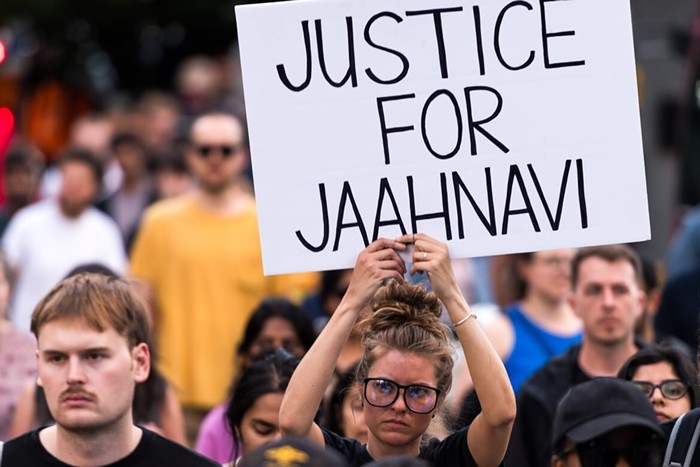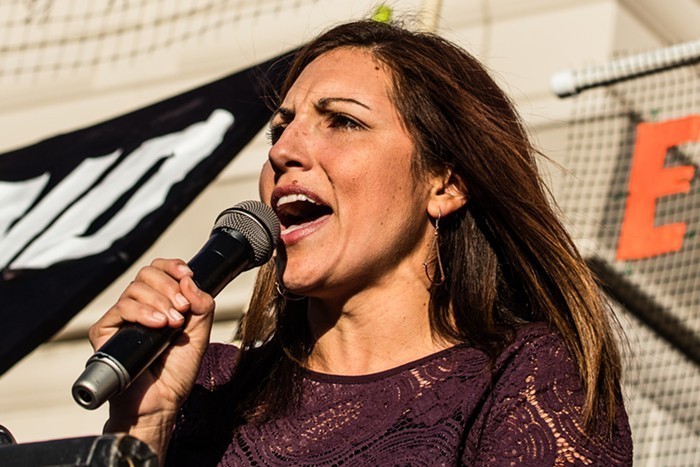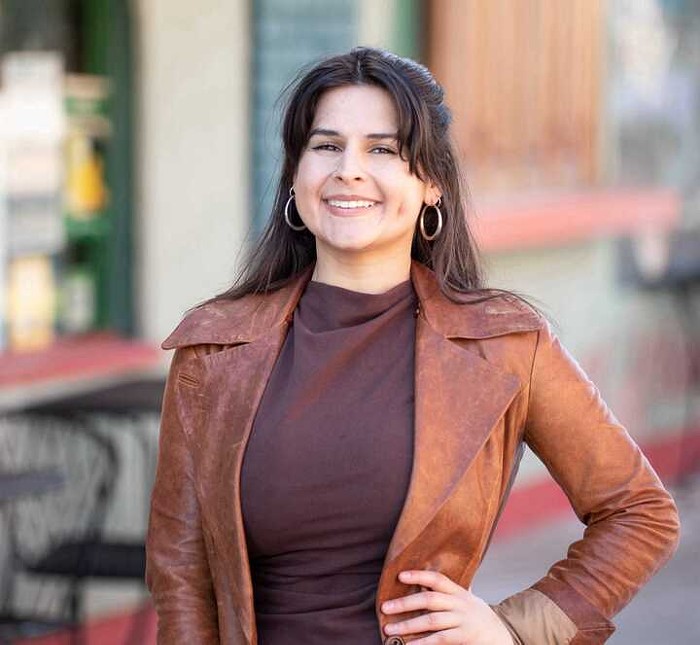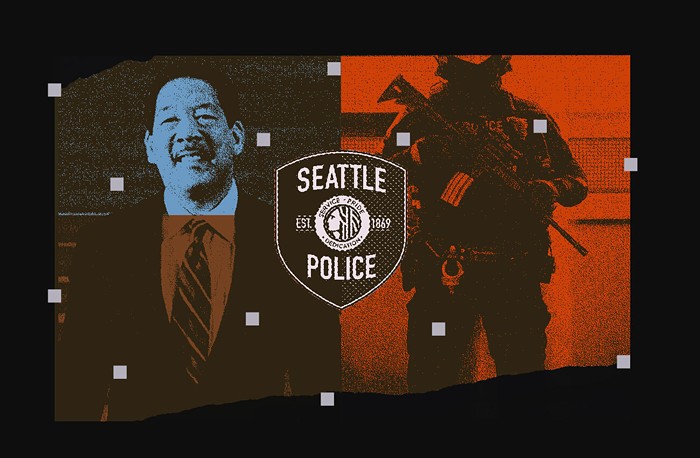Traffic in Seattle is a nightmare. You know this. You sit in it. You may even be sitting in it right now, reading this as your bus crawls toward Ballard or West Seattle. You sit in traffic because you have no choice.
Building more light rail is the answer.
Sound Transit 3, listed on your ballot as Sound Transit Proposition No. 1, will expand light rail to Ballard and West Seattle, plus Everett, Issaquah, Federal Way, Tacoma, and downtown Redmond. Assuming you and everyone you know votes "Approved," the ST3 package will also bring other transit improvements: New bus rapid transit will begin running between Burien, south of Seattle, and Lynnwood, in the north. Other rapid buses will begin running between Shoreline in the north and Bothell in the east. Plus, Sounder commuter train service will expand to carry more people between Seattle and Lakewood, south of Tacoma, and get two new stations.
"There is no alternative," King County executive and Sound Transit Board chair Dow Constantine said at a campaign event in September. "Building another freeway—that's a joke."
Yet judging by the tightfisted pearl-clutchers on the Seattle Times editorial board, the lackeys marching behind Bellevue mall developer Kemper Freeman, and other voices of shortsighted masstransitphobes, there's a surprising number of people in this region who would indeed prefer to see another freeway—which isn't going to happen—or anything other than more light rail.
To convince you they're right, these people are now busy spinning some real bullshit. Do not let them win. The first step is spotting their bullshit. The second step is crushing their bullshit with your vote on (or before!) November 8.
Remember, in order to pass ST3, voters across King, Snohomish, and Pierce Counties will need to come together and vote "Approved" in this election. In other words, urbanists in Seattle have to find common ground with suburbanists in Bellevue and Boeing workers in Everett and all the people who can't afford Seattle anymore and now live in Tacoma. And that's fucking hard. The suburbs are less enthusiastic about light rail than Seattle, which means those of us in King County who really want light rail have to vote for it in large numbers. If we don't and ST3 fails, we'll miss the shot of a generation.
So if you're at all on the fence, read this. If your friends and family are on the fence, send them the link to this piece. If they won't read it, read it to them. If there's an argument I haven't addressed here that you just can't get past, e-mail me (heidi@thestranger.com) and I'll do my best to find you an answer. If you're irredeemably anti-transit and not interested in helping pay for something to benefit future generations, drop everything and read all of the below words very slowly, over and over, until November 9. The rest of you: Ballots are due by November 8.
BULLSHIT CLAIM NO. 1: ST3 IS TOO EXPENSIVE
In the voters' guide, the opposition makes this accusation: "The legislature authorized Sound Transit to raise taxes $15 billion for ST3. Somehow it's exploded into an eye-popping $54 billion!" That's nonsense.
Back during the legislative session, people threw around that $15 billion number as they worked to get lawmakers to give us the authority to tax ourselves for light rail. It was an example of what a 15-year light rail package would cost—just in new taxes. But the only thing the legislature decided on was the percentage of tax increases Sound Transit could seek, not the total size of the package. So Sound Transit took that authority and crafted a 25-year package, because a 25-year package can deliver more to the entire region. They combined those new taxes with existing taxes and grants, and then added expected inflation, and that gets us to $54 billion.
Of that, $27.7 billion is new taxes over the next 25 years, most of that coming from a .5 percent increase in the sales tax and the rest coming from property taxes and car tab fees. The remaining $26.1 billion comes from taxes you're already paying, grants, bonds, and fares. Of the new taxes, only about $8 billion will come from North King County, including Seattle.
So what does this mean for you? For the median resident of the three-county taxing district, that works out to about $169 per person per year or $338 per household. This will be higher in Seattle because of higher property values and incomes. I plugged Seattle's median home value, median household income, and the average Seattle car value into ST3 tax calculators created by Sound Transit, the Seattle Times, and the opposition campaign. I got values ranging from $519 to $556 per year for a two-person household. That's about $45 a month per household. But if you're a broke transit rider, take heart: Lower incomes and cheaper cars (or no car) means you will pay much less.
BULLSHIT CLAIM NO. 2: ST3 WAS RUSHED ONTO THE NOVEMBER BALLOT WITHOUT ENOUGH PUBLIC INPUT
Only in Seattle could people claim a project that has been holding public meetings since 2012 was rushed. Sound Transit has been planning for ST3 for years. Last summer, the agency asked people to rank the projects that are most important to them, and it got about 25,000 responses. Then it presented a draft plan and asked for feedback. It received nearly 35,000 responses. The theme was clear: People wanted light rail faster. So Sound Transit sped up some of the proposed projects, and the Sound Transit Board—a group of elected officials from all over the region—sent it to the ballot.
Now consider how long this region has been waiting for real mass transit. Seattle had its shot at a mostly federally funded rail system way back in 1968 and 1970, and voters blew it by rejecting the idea both times. Seattle voters fought for an elevated rail system in the 1990s and early 2000s, but the city dropped the ball. It wasn't until 1996 that Sound Transit's first light rail measure, Sound Move, was approved. The agency has incrementally been building lines since. By no definition does any of that constitute a "rush" toward mass transit in this city.
BULLSHIT CLAIM NO. 3: THE PROJECTS IN ST3 WILL TAKE TOO LONG TO BUILD
Ugh. I get it. For those of you who actually want us to be rushing, it's hard to get excited about new light rail lines that won't open until 2030 (West Seattle), 2035 (Ballard), or 2036 (Everett). Some of you are gonna be drooling in a retirement home by then (looking at you, Frank Blethen). But those long timelines are necessary, unless we can (a) find a free-flowing source of cash, (b) abandon all environmental regulations, and (c) cut out annoying regulations like the noise rules that stop the construction crew building the station in your neighborhood from working all night long.
None of those are very likely. The agency must plan, study, and do environmental reviews for years before construction begins. And some of these projects are going to be fucking complicated—like digging a new tunnel under downtown Seattle. That shit takes time.
The good news is cities can speed up some of those timelines by streamlining permitting and reviewing processes (write to your city council members!), and Sound Transit is already working on other projects approved the last time they went to voters. While we wait for Ballard and West Seattle, we'll see light rail open north to the University District and Northgate (2021), to Lynnwood (2023), and east to Bellevue (2023). (And if the new Capitol Hill and University of Washington stations, which have contributed to record ridership rates, are any indication, those stops will attract thousands of new riders.) With ST2 and—assuming we pass it—ST3, new stations and lines will be opening steadily for the next 25 years.
BULLSHIT CLAIM NO. 4: ST3 IS A "NEVER-ENDING TAX"
This is just a lie. The Seattle Times editorial board knows it's a lie and they keep using it, calling ST3 a "permanent tax." Language in the ST3 materials you'll vote on requires that—if there is no Sound Transit 4—Sound Transit roll back the ST3 taxes after the bonds are paid off, which would likely be about seven years after the projects are completed in 2041.
Most of the existing taxes, which you already pay today, would remain in order to pay for the operations and maintenance of trains, but those are separate from the new ST3 taxes. And guess what! That's a good thing! It gives Sound Transit the necessary money to keep the trains running so you and your future kids and grandkids don't all die in fiery crashes on unmaintained light rail trains. (Not convinced? Take a look at Washington, DC, where years of putting off maintenance now means some subway lines will be down for a year.)
Now, some people lump this in with another complaint. They'll say ST3 lets the agency build for too long without going back to the voters. Let's do a little now and a little later, they'll say. That's the approach this region has been taking for decades. Today, the region is growing so rapidly, there is no time for incrementalism. This is our chance to fix the mistakes voters made in the 1960s and '70s. This is our chance to go big.
BULLSHIT CLAIM NO. 5: ST3 IS A "BLANK CHECK"
This package has a dollar figure associated with it ($54 billion). So if it were a check, it would not be blank. That number would go on the check. It would not be a blank check because THERE IS AN AMOUNT ON THE CHECK.
BULLSHIT CLAIM NO. 6: ST3 TAXES THREATEN EDUCATION FUNDING
Hey, Seattle Democratic state senator Reuven Carlyle, are you proud of yourself? You handed the ST3 opposition a convenient talking point when you announced in August that you wouldn't endorse ST3, even though it would bring light rail to your district, because of the "genuine burden the Sound Transit proposal places on public education." Even though you said you weren't actively opposing ST3, opponents have run with your talking point, claiming ST3 will jeopardize the state's ability to come up with money for public education. But that would not in fact happen if ST3 passes.
This shit gets wonkier than I can get into here, but what you need to know is that the state legislature is currently able to raise property taxes only up to a certain level, and some people worry the property taxes in ST3 eat away at that limit. But guess who decides how much can be charged in property taxes? Guess who gets to set that level? State legislators! They still have room to raise property taxes under the limit. They can also raise that limit or turn to other tax sources, like a capital gains tax, for education. They gave Sound Transit the authority to use property, sales, and MVET taxes for ST3, so that's what Sound Transit used. It's on the legislature to deal with education.
BULLSHIT CLAIM NO. 7: SOUND TRANSIT CAN'T BE TRUSTED
Back in the 1990s, Sound Transit was a mess. The first Sound Transit ballot measure to pass—Sound Move—included seriously inaccurate calculations about how long it would take to build light rail and how much it would cost. By the early 2000s, the agency announced it would take twice as long and it would cost twice as much to build light rail between Angle Lake and the University District.
However, in the years that followed, a new head helped the agency get its shit together. The Feds, who initially pulled their support, gave Sound Transit grants, and in 2009, the first segment of light rail opened. Since then, every project has been delivered on time and on budget. The "can't be trusted" critique is lazy, outdated bullshit. Don't fall for it.
BULLSHIT CLAIM NO. 8: THE OPPOSITION CARES ABOUT TRANSIT, TOO
Follow the money. A group called "Families for Sustainable Transit" is the top contributor to the No on ST3 campaign. And Families for Sustainable Transit is getting most of its cash from longtime rail opponent Kemper Freeman and the King County Republican Party, which claims in its platform that Sound Transit has a "long record of broken promises, unaccountability, and excessive taxation." (See above.)
BULLSHIT CLAIM NO. 9: WE COULD DO THE SAME THING WITH BUSES FOR CHEAPER
There may be some universe in which local governments have the political will to spend enough money and take enough lanes away from cars to make bus travel truly comparable to trains. Puget Sound in 2016 is not that universe.
Taking significant lanes away from cars is, say it with me, never! gonna! happen! That leaves a different strategy for making buses run as reliably and quickly as trains: separate busways. And separate rights-of-way are exactly what makes light rail so expensive. In 2005, Sound Transit studied both light rail and bus rapid transit with its own right-of-way between Seattle and Bellevue. They found that the costs would be similar and ridership would be higher on light rail. Buses have a role to play in mass transit, but they're never going to do what trains can do.
BULLSHIT CLAIM NO. 10: LIGHT RAIL WILL BE OBSOLETE BY THE TIME IT'S BUILT
You know those old magazine stories in the 1950s and '60s in which some idiot confidently looked ahead to a future? The ones that said come the year 2000, we'd all have flying cars? This bullshit is kinda like that bullshit.
Opponents claim we don't need light rail because we've already got Uber and self-driving cars are coming soon. But here's the thing about self-driving cars and ride-sharing services like UberPOOL: They're still cars. Cars need road space. Cars get stuck in traffic. Cars get delayed by wrecks and obstructions in the road. (Yes, haters, this can happen to light rail that runs along the street, too. But all the new projects in ST3 will be elevated, underground, or run at ground level in their own right-of-way, so none of them will be interacting with traffic.)
It's not that cars won't dramatically change in the next 20 years, it's that cars will never be the answer. In the words of Seattle Transit Blog: "There is no plausible car-first future." Also coming in the future: Hundreds of thousands of new people are moving here, which means more cars on our already clogged roads—unless people have a choice that gets them around town faster and easier, unless we build light rail. Oh, and by the way: On October 24, Uber endorsed ST3.
BULLSHIT CLAIM NO. 11: ST3 WON'T FIX CONGESTION
Don't tell Kemper! This one is actually true! Light rail won't put an end to cars. It won't transform our freeways into sleepy greenways so empty your grandkids can skateboard there.
That's also not the fucking point.
Cities with expansive transit systems—think New York City—still have crippling traffic. Traffic will always be a fact of life. If you take some cars off the road in a rapidly growing region, more cars will arrive. Mass transit is about giving people an alternative. And light rail can give a lot of people an alternative. When they're full—like what we're seeing right now after a Huskies or Mariners game—four-car light rail trains running every three to six minutes can carry 8,000 to 16,000 people per hour. Put all those people in cars, put those cars on the street, and no one will get anywhere.
And 800,000 new people are expected in the region by 2040. Even if, come 2040, you're not choosing to use light rail, do you want all those new people forced into traffic next to you or do you want them to have an alternative?
BULLSHIT CLAIM NO. 12: ST3 DOESN'T DO ENOUGH FOR SEATTLE
Ballard and West Seattle? That's it? There is no doubt that Seattle needs better transit in the city. (RIP, monorail.) But here's what we have today: Sound Transit, a regional agency that collects money from counties across the region and delivers projects to all of those counties. No matter how much those of us inside Seattle—the ones whose votes will carry ST3 to victory if it passes—wish it were true, Sound Transit will not take money from those other counties and use it entirely on new projects in Seattle.
ST3 is not a package that gives Seattleites everything we want because it can't be. But it is pretty damn good. Lines to Ballard and West Seattle would be entirely separated from traffic. The commute from downtown to Ballard would take 17 minutes. Downtown to West Seattle would be a 12-minute ride. Trains would run every six minutes. The line to Ballard could see 145,000 boardings a day. The city would get 12 new stations plus have three expanded stations and a new downtown tunnel. That's enough to radically reconfigure getting around in this city—and it should definitely be enough to get you to ignore all the bullshit anti-transit rhetoric and vote "Approved."
Sound Transit 3 appears at the bottom of your ballot as Proposition No. 1. Ballots must be postmarked or dropped in a ballot drop box by November 8.



















